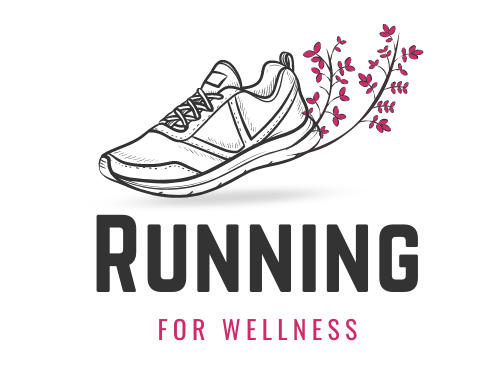The decision of whether to visit a sauna after a workout is a common consideration for fitness enthusiasts.
Post-workout recovery is crucial for maximizing the benefits of exercise and ensuring overall health.
Let us talk about it.
Table of Contents
ToggleBenefits of Using a Sauna After a Workout

First, let us address the benefits of this approach.
Muscle Recovery
One of the primary benefits of using a sauna after a workout is enhanced muscle recovery.
The increased blood circulation from the heat helps deliver more oxygen and nutrients to fatigued muscles, accelerating the healing process.
Reduced muscle soreness is another advantage, making it easier to maintain a consistent workout routine.
Cardiovascular Health
Regular sauna use can improve cardiovascular health by mimicking the effects of moderate-intensity cardio exercise.
The heat causes the heart rate to increase, promoting better heart function and potentially lowering the risk of heart disease.
This makes sauna sessions a valuable addition to a fitness regimen.
Detoxification
Sweating in a sauna helps remove toxins such as heavy metals and BPA (bisphenol A) from the body.
The detoxification process can improve overall health and skin condition, leaving the skin clearer and more radiant.
The regular removal of toxins can also contribute to a healthier immune system.
Weight Loss
The elevated metabolic rate during a sauna session can aid in weight loss and long-term weight management.
While the immediate weight loss is primarily water weight, regular sauna use can support a higher metabolic rate, contributing to overall calorie burning and fat reduction over time.
Mental Health
Sauna use offers significant mental health benefits. The heat promotes relaxation and stress relief, reducing cortisol levels and fostering a sense of well-being.
Regular sauna sessions can improve mood, decrease anxiety, and lower the risk of depression, making it a valuable tool for mental health maintenance.
Potential Drawbacks of Using a Sauna After a Workout

Now let us address the drawbacks.
Dehydration
One of the main risks associated with post-workout sauna use is dehydration.
Intense sweating can lead to significant fluid loss, increasing the risk of:
- Dizziness
- Muscle cramps
- Heatstroke
It is crucial to stay well-hydrated before, during, and after sauna sessions to mitigate these risks.
Heart Stress
While sauna use can benefit cardiovascular health, it is not recommended for individuals with high-risk heart conditions.
The increased heart rate and blood pressure can put undue stress on the heart.
Those with heart disease should seek medical clearance before including sauna sessions into their routine.
Reduced Sperm Count
Men considering fatherhood should be aware that regular sauna use can temporarily reduce sperm count.
The high temperatures can affect sperm production, so men trying to conceive should limit their sauna exposure.
However, this effect is usually reversible once sauna use is reduced or stopped.
Types of Saunas

Saunas come in various types, each offering unique benefits and experiences.
Dry Sauna
A dry sauna uses high temperatures and low humidity to create a hot environment.
Typically, these saunas heat up to around 160-200°F (71-93°C) using electric or wood-burning stoves.
The dry heat helps to relax muscles, improve circulation, and promote sweating, which aids in detoxification.
Steam Sauna
Also known as steam rooms or Turkish baths, these saunas maintain a humid environment with temperatures ranging from 100-120°F (38-49°C).
The high humidity can help with respiratory issues by opening up the airways and is also beneficial for skin hydration.
The moist heat can be particularly soothing for those with joint pain or arthritis.
Infrared Sauna
Infrared saunas use infrared heaters to emit light waves that directly heat the body without significantly warming the surrounding air.
These saunas operate at lower temperatures (120-140°F or 49-60°C) but still induce intense sweating.
Infrared saunas are praised for their deep tissue penetration, which can enhance muscle recovery and alleviate chronic pain.
Sauna Etiquette and Tips

To maximize the benefits and minimize the risks of sauna use, it is important to follow proper etiquette and safety tips.
- Stay Hydrated: Always drink plenty of water before and after a sauna session to prevent dehydration.
- Limit Session Time: Keep sauna sessions to a manageable duration, typically 10-20 minutes. Overexposure to heat can lead to overheating and other health risks.
- Shower Before Entering: Showering before entering the sauna helps to keep the environment clean and allows for better sweating.
- Use a Towel: Sit or lie on a towel to keep the sauna benches clean and to provide a barrier between your skin and the hot surfaces.
- Wear Appropriate Clothing: Wear minimal clothing, such as a swimsuit or a towel, to allow your skin to breathe and to facilitate sweating.
- Avoid Bringing Electronics: Leave electronics outside the sauna to prevent damage from the heat and avoid distractions.
- Practice Mindfulness or Light Stretching: Use the sauna time to relax mentally.
In Conclusion
using a sauna after a workout can offer numerous benefits, including:
- Improved muscle recovery
- Cardiovascular health
- Detoxification
- Weight management
- Mental health
However, it is important to consider potential drawbacks such as dehydration, heat stress, and reduced sperm count.
By following proper sauna etiquette and safety tips, you can make the most of your sauna experience and enhance your overall well-being.
Related Posts:
- Top 400 Hilarious Gym Quotes to Keep You Motivated
- Top Foods for Runners - What to Eat to Recover…
- How To Recover From Muscle Inflammation Without Medication
- How to Improve Flexibility and Avoid Muscle…
- Benefits of Omega-3 Fatty Acids for Runners
- Should You Run on an Empty Stomach? Pros and Cons Explained







